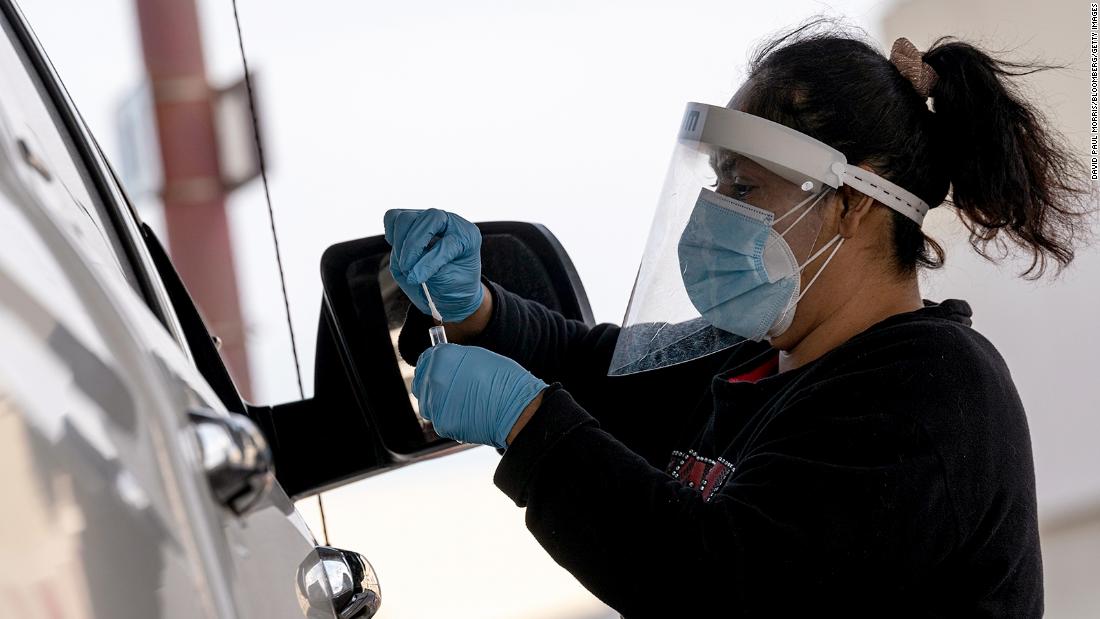Particularly a variant, which was first identified in the United Kingdom. It has now been detected in at least 22 states, according to data published on Friday by the Centers for Disease Control and Prevention.
“We are now in the second half of the fight against this pandemic,” Washington Health Secretary Umair A. Shah said during a news conference. “It is very important for us to really redouble our efforts to avoid this strain, as well as any strain to take over, because we want to make sure that transmission does not happen in our state and the best way to do that is to prevent, prevent, prevent.”
‘More very bad news’
A UK report released Friday says there is “a realistic possibility” that the new variant has a higher death rate than other variants.
“The data is accumulating – and some of it I can’t share – that clearly supports that B.1.1.7 is causing more serious illness and increasing the number of deaths,” said infectious disease expert Michael Osterholm. “We already know that this variant has increased transmission and, therefore, this is very bad news.”
But the director of the National Institutes of Health, Dr. Francis Collins, said on Saturday that it is still too early to say whether the variant is more deadly, telling MSNBC: “these data are very preliminary”.
“It seems that if you look at 1,000 people who were infected with Covid-19, usually about 1%, 10 of them, would die from it. Perhaps with this virus, it would be 13 instead of 10,” said Collins. “That is a small difference.”
He added that the numbers could also be a “consequence of the fact that the UK’s healthcare system is really overwhelmed”.
“It also affects mortality,” added Collins.
More than 20 million doses of vaccine administered in the USA
“I would anticipate that within a period of probably no more than two weeks, the data will be examined by the Data and Security Monitoring Council,” Fauci told MSNBC. And if the data is strong enough, the next step would be to submit it to the Food and Drug Administration for emergency use authorization, he said.
“Let’s say they can … get a USA in February, when they receive a significant amount of doses, it will probably be a month or two after that,” he said. “As soon as they enter May, June, July, August, you will see a marked increase in additional doses of this single-dose vaccine.”
Meanwhile, the FDA also told CNN on Saturday that, if absolutely necessary, “modest delays” between the first and second doses of current Covid-19 vaccines are not expected to diminish protection against the virus.
The agency said it “recognizes that fully immunizing as many people as possible across the country will help to reduce the spread of the virus that causes COVID-19 and should be a priority.”
Previously, the FDA had warned that changes to vaccine schedules without appropriate data could put public health at risk.
The CDC also updated its guidance to say that second doses of vaccines can be scheduled up to six weeks after the initial doses, if necessary, the addition of second doses should be administered as close as possible to the recommended interval – three weeks after the first dose for the Pfizer / BioNTech vaccine and four weeks for the modern vaccine.
Hospital leader: ‘We are really in the darkest days’
All of this happens at a time when the United States continues to fight a brutal battle against the virus.
And more than 6,800 people remain hospitalized with the virus – 24% of them are in the ICU.
In Georgia, a health official described a bleak picture of virus control.
“We are really in the darkest days of this pandemic,” Dr. Deepak Aggarwal of the Northeast Georgia Medical Center told CNN on Saturday night. “We are seeing more than 200 patients a day now, than we normally see at this time of year.”
“And also, we are dealing with the increasing number of deaths. Our system normally handles less than 10 deaths per month and we have already had 169 deaths by 21 January.”
Michael Nedelman, Lauren Mascarenhas, Elizabeth Cohen and Carma Hassan of CNN contributed to this report.
